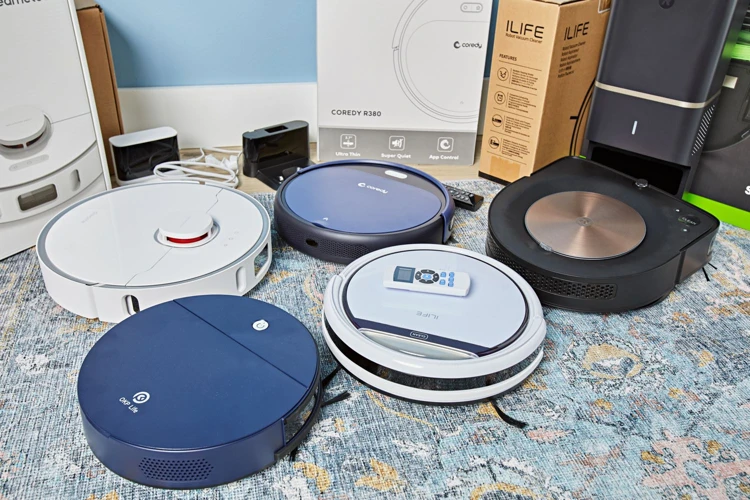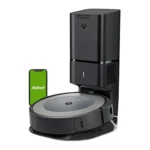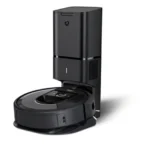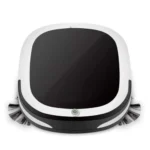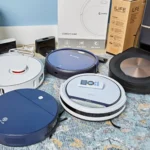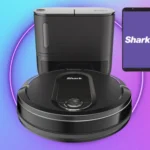As technology advances, our lives become easier and more convenient. One such innovation is the automatic dirt disposal vacuum cleaner. It eliminates the manual task of emptying the dirt and debris collected by the vacuum, making cleaning a breeze. But how exactly does this technology work? In this article, we will explore the inner workings of automatic dirt disposal vacuums, their advantages, and the future of this technology. So, let’s dive into the world of self-emptying vacuums and discover how they are changing the cleaning game.
The Basics: How Do Automatic Dirt Disposal Vacuums Work?
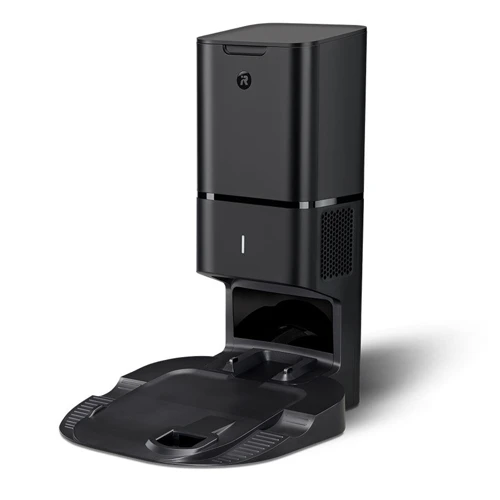
Automatic Dirt Disposal vacuums have revolutionized the way we clean our homes. These devices work by utilizing sophisticated sensors, powerful motors and suction systems, and collection bins and bags, all working together to keep your home free of dirt and dust.
At the heart of any automatic dirt disposal vacuum cleaner are sensors that help the device navigate around your home. These sensors scan the room, detect objects, and determine the layout of your home. Based on this information, the device creates a map of your home, which it uses to clean efficiently and effectively.
In order to remove dirt and dust from your home, automatic dirt disposal vacuum cleaners use powerful motors and suction systems. These motors create suction that pulls dirt and debris through the vacuum head and into the collection bin.
The collection bin is arguably the most important part of an automatic dirt disposal vacuum cleaner. These devices are designed to collect and store dirt, dust, and debris from your home, making it easy for you to dispose of them.
The collection bins in an automatic dirt disposal vacuum cleaner use various sensors to detect when they’re full. When the bin is full, the vacuum cleaner will typically return to its charging dock, where a self-emptying mechanism will be triggered to empty the bin.
These collection bins can either be bagged or bagless. Bagged collection systems use disposable bags that you can simply remove and discard when they’re full, while bagless systems use filters to trap dirt and dust, which you can then easily remove and clean.
The collection bins or bags make it easy to dispose of dirt and debris, without having to come into direct contact with the dirt.
Automatic dirt disposal vacuum cleaners have proven to be much more efficient, convenient, and effective than traditional vacuum cleaners. If you want to save energy and time while enjoying the benefits of cleaner indoor air, you might want to consider investing in one of these advanced cleaning devices. Learn more about the energy-saving benefits here.
Sensors
One of the integral parts of automatic dirt disposal vacuum cleaners is the sensors. These are responsible for detecting and avoiding obstacles such as furniture and walls to ensure that the device navigates the cleaning area properly without getting stuck. They also help in identifying particularly filthy spots on carpets or floors that require extra cleaning attention, ensuring that the entire surface is cleaned effectively.
There are various sensors used in automatic dirt disposal vacuums, including infrared and optical sensors, cliff sensors, and bumper sensors. The infrared and optical sensors determine the distance of a potential obstacle, allowing the vacuum to make better decisions when navigating around it. The cliff sensors, on the other hand, detect any elevation changes such as staircases to help prevent the device from falling off. Lastly, the bumper sensors help in sensing any impact and reduce the speed or change direction to avoid damages.
These sensors are crucial in making automatic dirt disposal vacuum cleaners smarter, more efficient, and effective in cleaning any space. These devices are environmentally friendly as they require less power and emit fewer pollutants than traditional vacuum cleaners. For more information on the benefits of automatic dirt disposal vacuums, read our article on Green Benefits of Automatic Dirt Disposal Vacuum Cleaners.
The role of sensors in automatic dirt disposal vacuum cleaners is essential in helping this technology to transform cleaning experiences in modern homes. With the growing interest in smart home devices, improving the sensing technology in future models of automatic dirt disposal vacuums is crucial. For more details on future features, take a look at our article on Auto Dirt Disposal Vacuum Features.
Motors and Suction System
In automatic dirt disposal vacuums, the motor and suction system are the core components that enable the device to create a powerful suction to remove dirt and debris from the floor. These vacuums use highly efficient brushes and motors that are designed to lift dirt and debris from carpets and floors.
The motor drives the brush bar, and this creates air movement that draws in the dirt and debris. The suction system then operates to create a vacuum that sucks up the dirt and stores it away for disposal later. The high suction power of automatic dirt disposal vacuums ensures that no debris is left on the floor or carpets, making cleaning a quick and easy task.
One of the key benefits of automatic dirt disposal vacuums is their superior suction power compared to traditional vacuums. Traditional vacuums often lose suction over time, making them less effective at removing dirt and debris from floors. In contrast, automatic dirt disposal vacuums maintain their suction power throughout the cleaning process.
These vacuums also use HEPA filters to trap and remove small particles that traditional vacuum cleaners may miss. This makes them an ideal choice for people with allergies or respiratory conditions who need to maintain a high level of air quality in their homes.
While the motor and suction system of an automatic dirt disposal vacuum are powerful and efficient, they are also designed to be quiet during operation, avoiding the loud noise associated with traditional vacuums. This makes them ideal for use at night or in households with children and pets.
The motor and suction system of automatic dirt disposal vacuums are engineered to provide high-powered suction, efficient cleaning and improved air quality. They have revolutionized the way we clean our homes, making it easier for us to maintain clean and healthy living spaces. Now that you have understood how motors and suction systems work in automatic dirt disposal vacuums, check out our article on how automatic dirt disposal vacuums can help improve air quality in your home.
Collection Bins and Bags
Collection Bins and Bags
One of the most significant components of automatic dirt disposal vacuum cleaners is the collection bin or bag. This component is responsible for holding the dirt and debris picked up by the vacuum cleaner. Unlike traditional vacuum cleaners, which require frequent emptying of the dustbin or bag, automatic dirt disposal vacuums can collect debris for days or weeks. This feature is a major convenience for many homeowners with busy schedules.
When it comes to collection bins and bags, there are two main types to consider: bagged and bagless systems. Bagged systems utilize disposable filter bags to collect dirt, dust, and other debris. Once the bag is full, it can be easily removed, disposed of, and replaced with a new bag. This system is more hygienic since the bag traps all the dirt and debris, ensuring that none of it escapes into the air during disposal. Bagless systems, on the other hand, use a dustbin to collect debris. The dustbin can be emptied and reused multiple times. These systems have become more popular in recent years as they are more environmentally friendly, and users don’t need to worry about buying replacement bags.
It’s essential to note that regular cleaning and maintenance of the collection bin or bag is necessary to ensure maximum performance and longevity of these vacuums. Failure to do so could lead to clogging or malfunctioning of the vacuum cleaner, which could negatively affect its overall performance. Refer to our article on auto dirt disposal vacuum maintenance for guidance on how to keep your vacuum functioning optimally.
Collection bins and bags are a crucial component of automatic dirt disposal vacuums, as they collect and store the dirt and debris picked up during cleaning. Choosing the right collection system is a matter of personal preference, but it is essential to keep the collection bin or bag clean to ensure that the vacuum cleaner operates at its best. These vacuums offer many benefits, including convenience, efficiency, and better air quality, as discussed in our article on the advantages of automatic dirt disposal vacuums (hyperlink to automatic dirt disposal vacuum cleaners at home). With the advancement of technology, automatic dirt disposal vacuums have become smarter and more effective in performing their duties. Learn more about this in the following section on the future of automatic dirt disposal vacuums (hyperlink to best auto dirt disposal vacs).
The Advantages of Automatic Dirt Disposal Vacuums
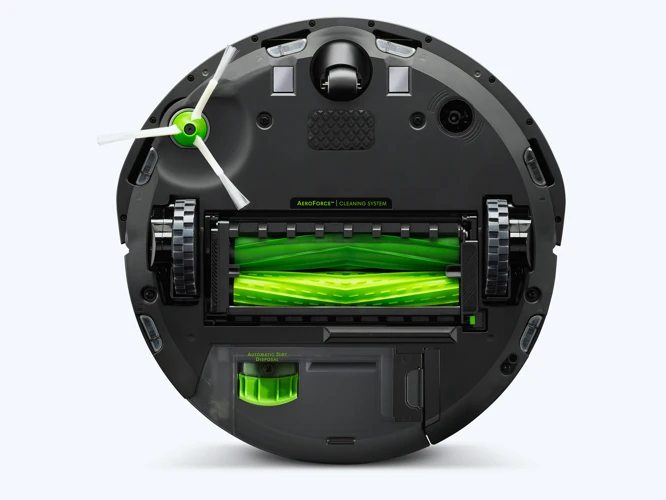
Automatic dirt disposal vacuum cleaners have several advantages over traditional vacuum cleaners. With advancements in technology, automatic dirt disposal vacuums have become smarter and more efficient, making them an ideal choice for homes and offices.
Convenience and Time-Savings: One of the biggest advantages of automatic dirt disposal vacuums is the convenience they offer. They can run autonomously and clean the house without any intervention. Unlike traditional vacuum cleaners, which require manual intervention to empty the collection bag or bin, automatic dirt disposal vacuums can be programmed to empty their collection bin at scheduled intervals. This saves time and energy, as users don’t have to worry about stopping the vacuum to empty the bin.
Better for Allergy and Asthma Sufferers: Automatic dirt disposal vacuums are equipped with high-efficiency filtration systems, making them a better choice for allergy and asthma sufferers. These vacuums use HEPA filters that capture small particles of dust, pollen, and other allergens, preventing them from getting back into the air. This ensures that the air in the house remains clean and fresh, making it a better environment for people with allergies and asthma.
Efficient and Effective Cleaning: Automatic dirt disposal vacuums are equipped with powerful suction systems that extract dirt and debris from carpets, rugs, and hard floors. They are more efficient than traditional vacuum cleaners, as they use advanced navigation technology to map the layout of the house and create a cleaning path. This ensures that the entire surface area of the house is cleaned, without missing any spots.
With these advantages in mind, it’s clear why many households are now considering upgrading to automatic dirt disposal vacuum cleaners. They save time, energy, and effort, are better for allergy and asthma sufferers, and provide efficient and effective cleaning. To learn more about the differences between automatic and traditional vacuums, read our in-depth article on auto vs. traditional vacuum cleaners.
Convenience and Time-Savings
Automatic dirt disposal vacuum cleaners provide ultimate convenience and time-saving benefits to households. With the ability to function autonomously, these smart vacuums clean floors, carpets, and other surfaces without any human intervention after being programmed.
The convenience of these vacuums is a game-changer in the household cleaning industry. Traditional vacuum cleaners require the user to manually remove and empty the dirt and debris collected in the bin after every use. This can be a time-consuming process, especially when using it frequently. Automatic dirt disposal vacuums, on the other hand, can collect dirt, debris, and other small materials for months before requiring attention. This means that homeowners can vacuum less frequently and still maintain a clean environment.
Moreover, these vacuums have the added benefit of saving time. With busy work schedules or other household chores, finding time to clean can be a hassle for many. However, with automatic dirt disposal vacuums, users can set a cleaning schedule that works best for them. Once the vacuum is programmed with the cleaning schedule, it takes care of the rest. The vacuum will wander around the house, picking up debris along the way, and dispose of it when the bin becomes full. This feature saves users hours of manual cleaning time.
Another convenience is that the vacuums can be controlled remotely through a mobile app or voice assistant. If you forgot to program the vacuum or need it to perform an extra cleaning session, simply access the mobile app and control the vacuum’s functions from afar. This feature adds flexibility to the cleaning schedule and ensures that the vacuum is used effectively to meet the user’s needs.
The convenience and time-saving benefits of automatic dirt disposal vacuums are unparalleled. They save homeowners time and effort by providing autonomous cleaning functions that require minimal human intervention. With a range of programmable features and smart functions, these vacuums are the future of household cleaning.
Better for Allergy and Asthma Sufferers
For people who suffer from allergies or asthma, the use of traditional vacuum cleaners can be a nightmare. The reason being, traditional vacuum cleaners release particles of dust and dirt back into the air while cleaning, resulting in respiratory and allergic reactions. However, the use of automatic dirt disposal vacuums can reduce the impact of these reactions in the following ways:
HEPA Filtration: Automatic dirt disposal vacuums are equipped with High-Efficiency Particulate Air (HEPA) filters, which are designed to capture and trap smaller particles such as pollen, dust mites, and pet dander that can trigger asthma and allergy symptoms. HEPA filters can capture up to 99.97% of these particles, making them an excellent choice for allergy and asthma sufferers.
No Direct Contact with Dust: In traditional vacuum cleaners, when the dustbin is full, the user has to empty it manually, which can cause a release of the collected dirt into the air. Automatic dirt disposal vacuums eliminate this problem altogether by avoiding any direct contact with dust.
Efficient Cleaning: Automatic dirt disposal vacuums come equipped with sensors, motors, and suction systems designed to clean efficiently and leave minimal dust or dirt behind. As a result, users do not have to run the vacuum repeatedly, unlike with traditional vacuums, which can exacerbate asthma or allergy symptoms.
Automatic dirt disposal vacuums are a better option for people with allergies and asthma as they are equipped with HEPA filters that capture small particles, avoid direct contact with dust while emptying, and offer efficient cleaning, which can help reduce the likelihood of triggering symptoms.
Efficient and Effective Cleaning
Automatic dirt disposal vacuums are known for their efficient and effective cleaning capabilities. Through the combination of powerful motors and suction systems, these devices can easily pick up dirt, debris, and pet hair from various surfaces such as carpets, hardwood floors, and tiles. The brushes of the vacuum work together to agitate and loosen the dirt and debris, while the suction system pulls it all in creating a clean and dust-free environment.
The sensors used in these vacuums allow for a more optimal cleaning experience. With their ability to detect the presence of dirt and debris, the vacuum can adjust its suction and cleaning power accordingly to ensure that every corner of the room is clean. These sensors also help the vacuum avoid obstacles, such as furniture or walls, lessening the risk of damage and ensuring a smooth cleaning process.
One feature that sets automatic dirt disposal vacuums apart from traditional vacuum cleaners is the self-emptying mechanism. With this innovative feature, the vacuum can go for weeks without the need for human interaction. The collected dirt is effectively stored in a collection bin or bag, and the vacuum will automatically dispose of the waste when the bin or bag is full. This reduces the need for manual cleaning and eliminates the hassle of having to dispose of dirt and debris every time you vacuum.
All in all, these automatic dirt disposal vacuums are not only efficient but also highly effective. With their advanced technology and impressive cleaning abilities, they offer a hassle-free and thorough cleaning experience. The combination of sensors, motors, suction systems, and self-emptying features ensure that you can enjoy a clean and healthy environment without the stress of regular cleaning.
The Technology behind the Self-Emptying Feature
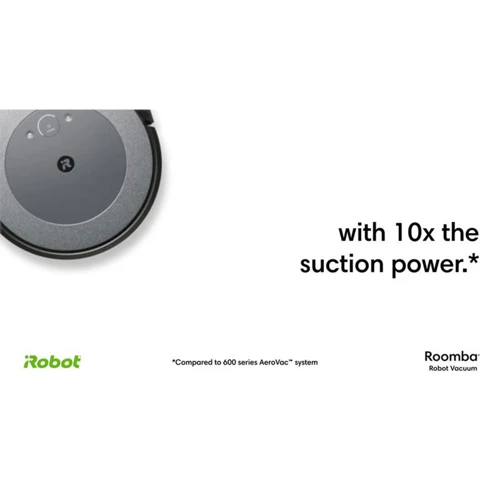
Automatic dirt disposal vacuums have a self-emptying feature that allows them to empty the collected dirt without any human intervention. But how does this technology work?
Sensor-Activated Dirt Bins
The self-emptying feature is made possible by a sensor-activated dirt bin. Once the vacuum detects that the bin is full, it sends a signal to the charging dock. The charging dock then activates the self-emptying mechanism, which empties the dirt bin into a larger collection bag or container.
The Charging Dock and Self-Emptying Mechanism
The charging dock is an essential component of the self-emptying feature. When the vacuum is not in use, it returns to the dock to recharge its battery. It is also the place where the vacuum dumps its collected dirt.
The self-emptying mechanism consists of a flap or door that opens when the vacuum is in the docking station. The dirt bin is then tilted or shaken, allowing the collected dirt to fall into the collection bag or container. Once the bin is emptied, the door or flap closes, and the vacuum resumes charging.
Bagged vs. Bagless Dirt Disposal Systems
Automatic dirt disposal vacuums come in two types of dirt disposal systems: bagged and bagless. In bagged systems, the collected dirt is contained in a disposable bag within the larger collection bag or container. Bagless systems, on the other hand, use filters to separate dirt and debris from the air, allowing the dirt to be stored in a collection bin.
Bagged systems are more hygienic since the vacuum owner can simply dispose of the bag when it becomes full. However, they can also be expensive since the bags need to be replaced regularly. Bagless systems are more cost-effective, but they require regular cleaning and maintenance to keep their filters working properly.
Overall, the self-emptying feature of automatic dirt disposal vacuums is made possible by a combination of sensors, charging docks, and self-emptying mechanisms. As this technology continues to evolve, we can expect to see even more innovative features that will make household cleaning even more convenient and efficient.
Sensor-Activated Dirt Bins
Automatic dirt disposal vacuums are designed to make cleaning a breeze, and one of the impressive features that make them stand out is their sensor-activated dirt bins. These bins are unlike those in traditional vacuum cleaners, as they can detect when they are full and can empty themselves.
The sensor-activated dirt bins use an array of sensors that detect the level of dirt and debris in the collection bin. When the dirt bin is full, the vacuum cleaner sends a signal to the docking station, which then initiates the self-emptying process. This process can be triggered automatically, or it can be scheduled to occur at specific times or after a specific number of cleaning sessions.
One of the benefits of sensor-activated dirt bins is that they eliminate the need for manual emptying, which can be a messy and unpleasant task. With this technology, you won’t have to worry about constantly monitoring the dirt bin, as your vacuum cleaner will take care of it for you, leaving you with one less task to worry about.
Sensor-activated dirt bins also help maintain the efficiency of the vacuum cleaner by preventing the collection bin from overloading. When the bin is overloaded, the suction power of the vacuum cleaner is reduced, which means that it will not be able to pick up as much dirt and debris as it should. However, with the self-emptying feature, the dirt bin is always kept at an optimal level, allowing the vacuum cleaner to operate at peak efficiency.
Sensor-activated dirt bins are an essential component of automatic dirt disposal vacuums. They offer a hands-free, hassle-free method of disposing of dirt and debris, while also ensuring that the vacuum cleaner operates at optimum performance levels. As vacuum technology continues to advance, we can expect even more sophisticated versions of sensor-activated dirt bins that will make cleaning easier and more efficient than ever before.
The Charging Dock and Self-Emptying Mechanism
One of the most innovative features of automatic dirt disposal vacuum cleaners is the self-emptying mechanism. After the vacuum has completed its cleaning cycle, it returns to its charging dock, where it empties collected dirt and debris into its collection bin. This feature not only saves time and effort but also makes cleaning more efficient and hygienic.
The charging dock is equipped with a powerful motor that creates enough suction to extract debris from the vacuum’s collection bin. The collected dirt and debris are then deposited into a larger container or bag that can hold several weeks’ worth of debris before needing to be emptied. The use of a larger container or bag means that users do not have to worry about emptying their vacuum as often as they would with a traditional vacuum cleaner.
The self-emptying mechanism is activated either by a sensor that signals the charging dock or by the vacuum’s own algorithm that detects when its collection bin is full. This means that users can set their vacuum to operate automatically and not worry about it until it needs to be charged or emptied.
A key advantage of the self-emptying mechanism is that it reduces the contact with allergens and dust that would otherwise be released when emptying a regular vacuum cleaner’s collection bin or dust bag. This makes it a great choice for those who suffer from allergies or asthma.
Another advantage is that the self-emptying mechanism ensures that the vacuum’s suction power remains consistent throughout its cleaning cycle. When a traditional vacuum’s collection bin is full, its suction power decreases, which means that the vacuum cannot clean as effectively. With the self-emptying mechanism, the vacuum maintains a consistent level of suction throughout its cleaning cycle, ensuring that it cleans as efficiently as possible.
The charging dock and self-emptying mechanism are game-changing features in the world of vacuum cleaners. They not only make cleaning more convenient and efficient but also more hygienic and safer for allergy and asthma sufferers. As vacuum technology advances even further, we can expect this feature to become even more advanced and integrated into our daily lives.
Bagged vs. Bagless Dirt Disposal Systems
When it comes to automatic dirt disposal vacuum cleaners, the type of dirt disposal system used can make a big difference in terms of convenience and maintenance. There are two common types of dirt disposal systems used in these vacuums: bagged and bagless.
Bagged Dirt Disposal Systems
A bagged dirt disposal system is a traditional system used in many vacuum cleaners. It uses disposable bags that are inserted into the vacuum and collect the dirt and debris. Once the bag is full or the vacuum cleaner is full, the bag can be removed and disposed of. Bagged dirt disposal systems have several advantages. First, they are more hygienic as the dirt and dust are contained within the bag and can be easily disposed of without creating a mess. Second, they require less maintenance as the bag can be replaced when full, eliminating the need to clean any dirt residue from the vacuum itself. Finally, bagged dirt disposal systems are often more efficient as they don’t require the vacuum to use as much suction power to collect the debris, which can result in a longer lifespan for the vacuum cleaner.
Bagless Dirt Disposal Systems
A bagless dirt disposal system, on the other hand, collects the dirt and debris in a dustbin that is built into the vacuum cleaner. This type of system is becoming increasingly popular in automatic dirt disposal vacuum cleaners due to its convenience and user-friendliness. Bagless dirt disposal systems can be easily emptied and cleaned, eliminating the need for any disposable bags. However, this type of system can also have several disadvantages. First, the dustbins can become clogged if not emptied regularly, which can cause the vacuum to lose suction power. Second, cleaning a dustbin can be messy and time-consuming, as the debris needs to be manually emptied and the bin needs to be cleaned thoroughly to prevent the growth of bacteria and other harmful microorganisms.
The choice between a bagged and bagless dirt disposal system comes down to personal preference and lifestyle. Bagged systems tend to be more hygienic and require less maintenance, while bagless systems offer more convenience and are easier to use. Whatever system you choose, it is important to regularly maintain and clean your vacuum to ensure it is always working at its best.
The Future of Automatic Dirt Disposal Vacuums
The future of automatic dirt disposal vacuums looks bright, with advancements expected in various areas. One aspect that is expected to see significant improvements is suction power and performance. Stronger motors and more efficient suction systems will allow for better and more effortless cleaning of large debris and pet hair.
Another area where significant upgrades are expected is in navigation and mapping technology. The ability of these vacuums to map and navigate around your house autonomously will improve significantly, allowing for more efficient cleaning of large spaces with minimal supervision.
In addition to improved suction power and navigation technology, integration with smart home systems is expected to take center stage. The ability to seamlessly connect these devices with other smart home devices like voice assistants, lighting systems, and door locks represents a significant upgrade in terms of convenience and versatility.
With the increasing demand for eco-friendly products, achieving an environmentally friendly vacuum is a key feature that manufacturers must focus on. Future vacuum cleaners are expected to come with sustainable features, such as a longer battery life, recyclable materials, and energy-efficient motors to reduce energy consumption.
It is worth noting that these upgrades are not just a distant future concept, as many of the necessary technologies are currently under research and development. With so much research and investment going into this technology sector, it’s exciting to imagine the possibilities and advancements that lie ahead in the world of automatic dirt disposal vacuum cleaners.
Improved Suction Power and Performance
As technology advances, we can expect to see improvements in the suction power and performance of automatic dirt disposal vacuums. One potential improvement is the use of stronger motors, which would significantly increase the suction power and efficiency of these machines. This would allow them to pick up heavier debris and tackle more challenging cleaning tasks.
Another way to improve suction power is to redesign the suction system itself. Engineers could experiment with different shapes and sizes of suction heads to optimize airflow and suction strength. Alternatively, they could modify the filtration system to reduce the amount of dust and debris that clogs up the suction mechanism, allowing air to flow more freely and increasing overall suction power.
New technologies like artificial intelligence and machine learning could be used to improve the performance of these machines. With AI, the vacuum could learn the layout of a house and adapt to different cleaning situations. This would allow it to navigate more efficiently and avoid obstacles more effectively, making it a more efficient and effective cleaner.
Another potential improvement is the use of advanced sensors that can detect dirt and debris with greater accuracy. These sensors would be able to detect smaller particles and ensure that they are all effectively removed from the floor. This would further improve the overall performance of the vacuum, making it a more thorough and effective cleaner.
We can expect to see significant improvements in the suction power and performance of automatic dirt disposal vacuums in the coming years. As the technology continues to evolve, these machines will become even more efficient and effective, providing homeowners with an increasingly convenient and hassle-free way to keep their homes clean.
Smarter Navigation and Mapping Technology
As technology continues to advance, it’s no surprise that automatic dirt disposal vacuums are becoming smarter and more efficient than ever before. One of the key areas of development in these devices is in their navigation and mapping technology.
Advanced Sensors: To improve the navigation capabilities of these vacuums, manufacturers are incorporating more advanced sensors. These sensors help the vacuum to better detect obstacles and avoid collisions. They can also help the device to map out the room and identify areas that require more thorough cleaning.
LiDAR Technology: Another technology that is enhancing the navigation capabilities of these vacuums is LiDAR (Light Detection and Ranging) technology. LiDAR uses lasers to measure distances and create high-resolution images of the vacuum’s surroundings in real-time. This allows the device to accurately map out the room and navigate around furniture and other obstacles with ease.
Smart Mapping: Some of the latest automatic dirt disposal vacuums utilize smart mapping technology to create detailed maps of the home. This allows the vacuum to recognize different rooms and create a more efficient cleaning schedule.
App Integration: Many automatic dirt disposal vacuums now come with their own app, allowing owners to control and monitor the device from their smartphone. Through the app, users can customize cleaning schedules and even set “no-go” zones, which the vacuum will automatically avoid.
In the near future, we can expect to see even more impressive developments in the navigation and mapping technology of automatic dirt disposal vacuums. These advancements will further improve the efficiency and effectiveness of these devices, making them even more invaluable tools for homeowners.
Integration with Smart Home Systems
With the rise in popularity of smart homes, it’s no surprise that automatic dirt disposal vacuums are also getting in on the trend. These vacuums are now integrated with home automation systems, allowing users to control and program their cleaning schedules from their smartphones or other connected devices.
Integration with smart home systems takes the convenience factor of automatic dirt disposal vacuums to the next level. Users can set up custom cleaning schedules for each day of the week or even control their vacuum remotely when they’re away from home. Some models even have voice control capabilities, allowing users to simply tell their vacuum to start cleaning or return to its dock when it’s done.
But the integration with smart home systems goes beyond just scheduling and control. With the right setup, users can even sync their automatic dirt disposal vacuum with their smart security system, allowing the vacuum to automatically start cleaning whenever the security system detects that no one is home. This can provide an added layer of security by making it look like someone is home, even if the house is actually empty.
Another benefit of integration with smart home systems is the ability for users to receive notifications and alerts from their vacuum. For example, if the vacuum encounters an issue during cleaning or the collection bin is full and needs to be emptied, users can be notified in real-time. This can help users stay on top of maintenance and ensure that their vacuum is always running at its best.
The integration of automatic dirt disposal vacuums with smart home systems is a natural progression in both technology trends. It provides users with even more convenience and control over their cleaning schedules, while also allowing for seamless integration with other smart home devices and systems. As technology continues to advance, it’s likely that this level of integration will only continue to grow, making cleaning our homes even easier and more efficient than ever before.
Conclusion
In conclusion, automatic dirt disposal vacuums are revolutionizing the way we approach cleaning. With their advanced sensors, powerful motors, and efficient collection systems, they save time and effort while providing a deep and thorough clean to your home or office.
Moreover, the self-emptying feature of these vacuums takes their convenience to the next level, allowing them to empty their own collection bins, eliminating the need for you to frequently clean or change the bin. This technological advancement is a game-changer for busy individuals and those with mobility challenges.
As the technology behind these vacuums continues to evolve, we can expect even more advanced features to be introduced in the future. For instance, we can anticipate major improvements in suction power, mapping technology, and connectivity with smart home systems. These advancements will not only make cleaning easier and more efficient but also enhance the overall quality of life for users.
In light of all these benefits, it’s no wonder that automatic dirt disposal vacuums have become so popular. They offer a convenient and highly effective cleaning solution that’s perfect for busy individuals and those with health concerns like allergies and asthma. With so many advantages, it’s safe to say that automatic dirt disposal vacuums are here to stay and are a worthwhile investment for anyone seeking a cleaner, more comfortable living environment.
Frequently Asked Questions
What is an automatic dirt disposal vacuum?
It is a cleaning robot that autonomously navigates your home, sucking up dirt and debris. When the dustbin is full, it empties itself into a docking station, which can be as often as after each use.
How do sensors in automatic dirt disposal vacuums work?
Sensors allow the robot to navigate and map out your home, avoid obstacles, and detect areas that require extra cleaning. CCD vision and infrared navigation sensors are common in advanced models.
What are the benefits of using an automatic dirt disposal vacuum?
They save you time and offer convenience, more efficient cleaning than manual vacuums, and better cleaning for allergen sufferers.
How does the self-emptying feature work?
When the dustbin is full, the cleaning robot returns to its docking station. The robot uses a sensor to activate the dustbin’s opening, allowing the debris to fall into the collection bin.
What is the difference between bagged and bagless dirt disposal systems?
Bagged systems store dirt and debris in an internal bag, while bagless systems store it in a bin. Bagless systems usually require the disposal bin to be emptied less often than bagged systems.
Can automatic dirt disposal vacuums replace manual vacuum cleaners?
While they are highly advanced and offer excellent cleaning performance, they can’t replace manual vacuum cleaners entirely. They’re meant to supplement manual vacuum cleaners, providing a more thorough cleaning experience.
Are automatic dirt disposal vacuums loud?
They make less noise than manual vacuums. As they use newer technologies like brushless motors, they can operate at a much lower sound level like 50 dBA.
Can children or pets be around cleaning robots?
Yes, as long as they are supervised. Most models have sensors that detect obstacles like pets and children, pausing the cleaning process to prevent any accidents.
How does the future of automatic dirt disposal vacuums look?
The future is bright, with improved suction power, navigation and mapping, and integration with smart home systems on the horizon.
What does the docking station do for an automatic dirt disposal vacuum?
A docking station recharges the robot’s battery and houses the collection bin for debris. Additionally, the docking station often self-empts bags or bins, allowing the robot to stay on task longer.
